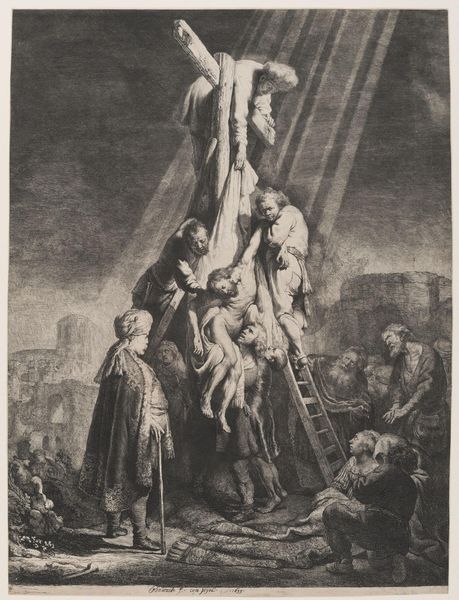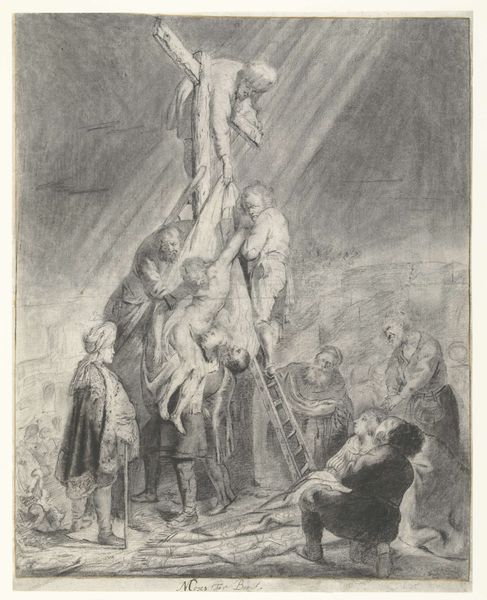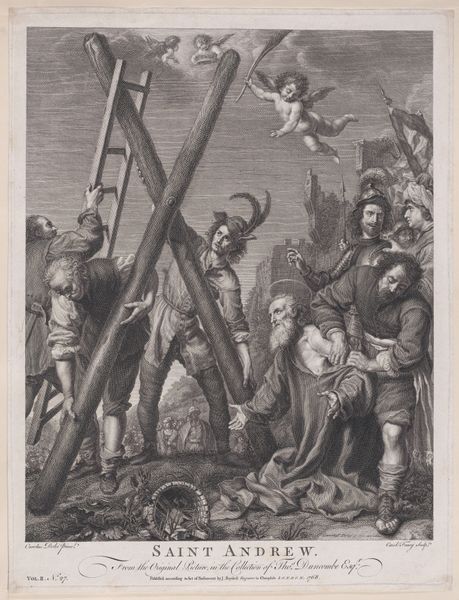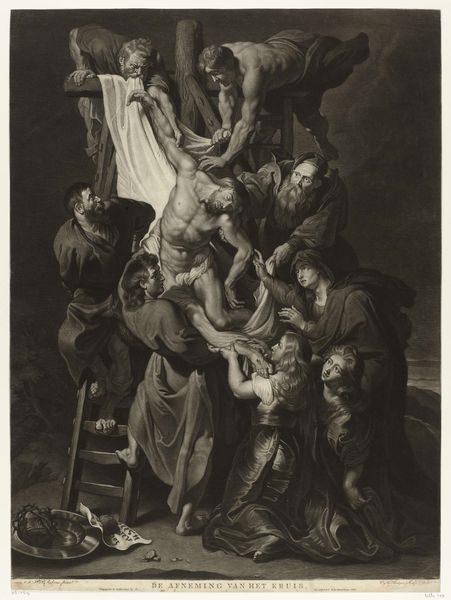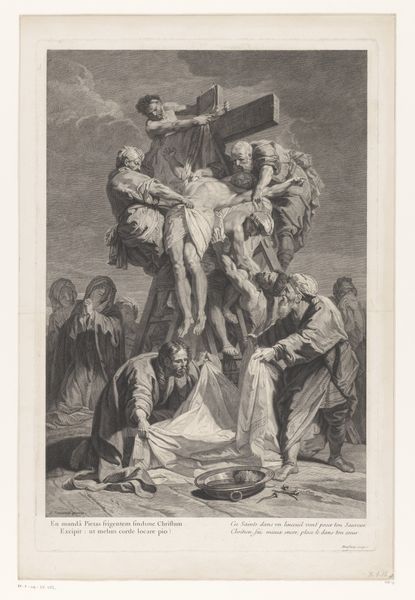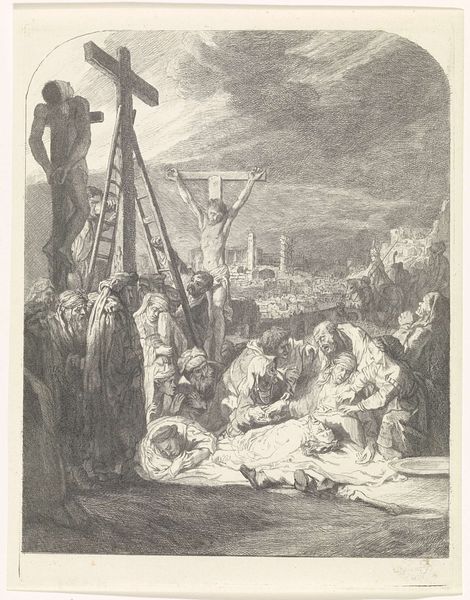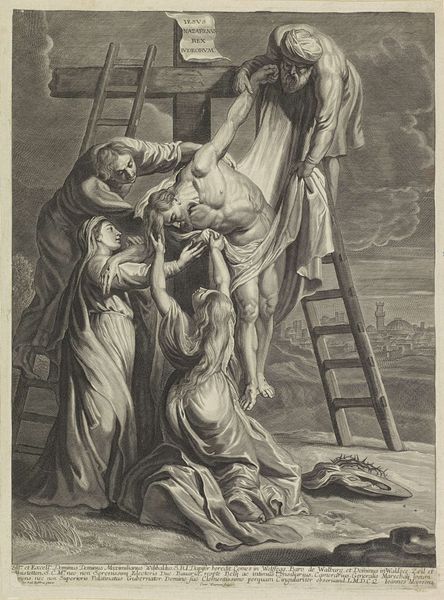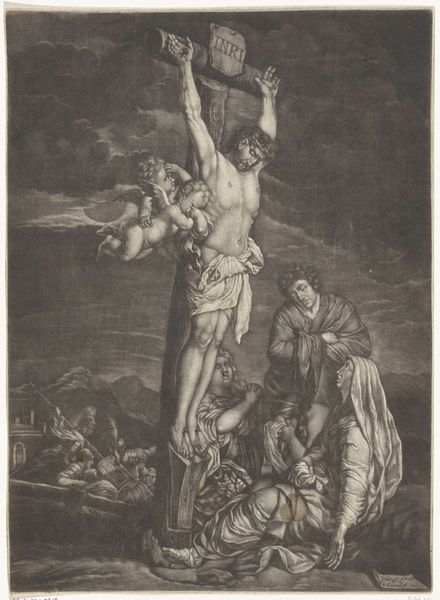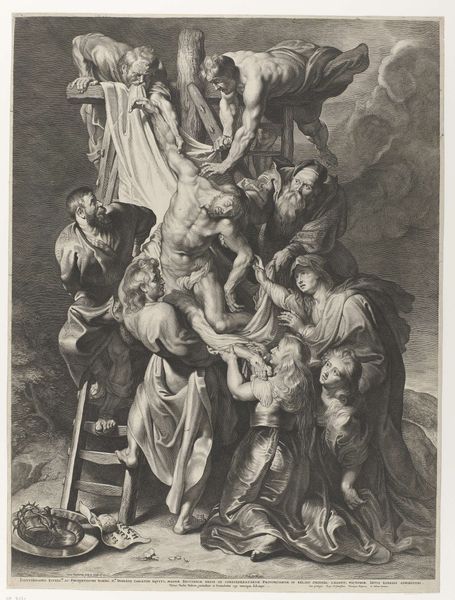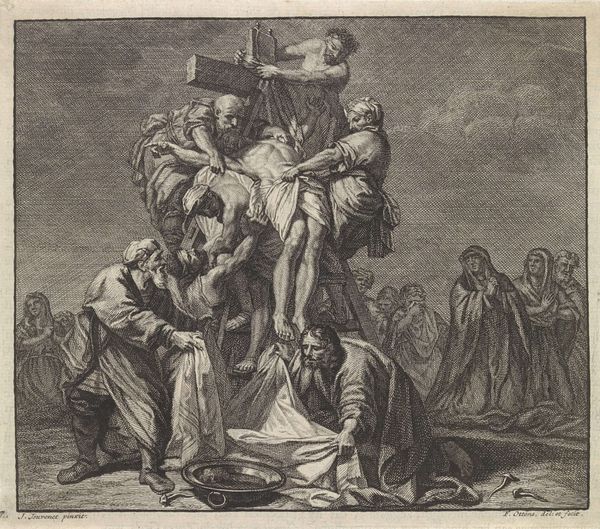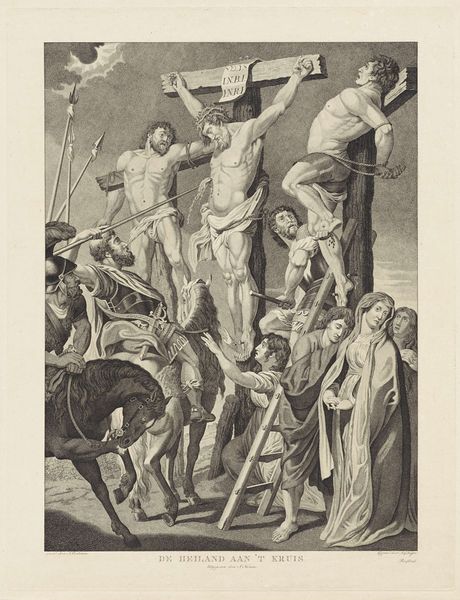
print, etching, photography
#
portrait
#
baroque
# print
#
etching
#
landscape
#
figuration
#
photography
#
jesus-christ
#
history-painting
#
virgin-mary
#
christ
Copyright: Public domain
Curator: This is Rembrandt van Rijn's "The Descent from the Cross," an etching from 1633. Editor: Yes, it's incredible, isn't it? The dramatic lighting and the sheer number of figures create such a powerful sense of grief. How would you interpret this work, from your perspective? Curator: As a materialist, I'm drawn to the etching process itself. Consider the labor involved in creating this image – the physical act of etching the plate, the social conditions of printmaking in 17th-century Amsterdam. We are seeing a mass producible object showing a venerated event. Editor: That's fascinating. I hadn't really thought about the means of production. Does the fact that it's a print, intended for wider circulation, change its meaning for you? Curator: Absolutely. Unlike a painting intended for a wealthy patron, prints were more accessible. Rembrandt was, in a way, democratizing religious imagery. Who would have had the opportunity to purchase it, what stories would it have told in their homes? Also consider the economic aspect. How does creating multiple copies affect the perceived value? Is it simply seen as craft, rather than a form of high art? Editor: I see what you mean. So, it's less about the emotional content of the scene and more about the physical process and its implications? Curator: Not exclusively. The two are intertwined. The widespread availability of this image shapes its reception and influence. I would also want to understand the paper and ink choices and how those affected his production process and decisions about how much to charge for prints. By studying these material elements, we can unlock deeper insights into the work's cultural significance and economic status. Editor: That really shifts my understanding. I was focused on the drama and emotion, but you've highlighted the social and economic context of its creation. Curator: Precisely. Analyzing the materials and modes of production allows us to see beyond the surface and engage with the historical and cultural forces that shaped the artwork and its interpretation. Editor: Thank you, that's a totally different way to look at it. I will start asking different questions of all artworks now.
Comments
No comments
Be the first to comment and join the conversation on the ultimate creative platform.
